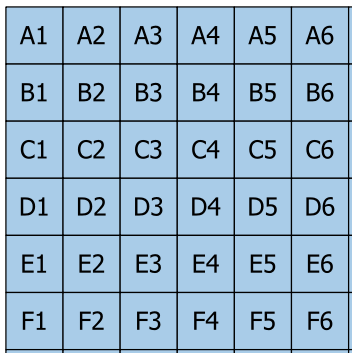openindexmaps-workshop
Exercise 3: Create a grid index map from scratch
In this scenario, we will create an index map from scratch, using a grid of 15-minute quads for the state of Colorado. We’ll use the Stamen Toner basemap for reference, because the state boundaries are easier to see.
- Start a new project in QGIS and add the Stamen Toner basemap
1. Create the grid
A 15-minute quad is 15/60 or 1/4 of a degree, so we need to create a rectangular grid where each cell is 0.25 degrees wide and tall. To cover all of Colorado, so we’ll need to figure out the lat/lon bounds of the state.
- Zoom in to Colorado (shift-drag will zoom into the rectangle you select)
- Click the Project CRS
 and change it to EPSG:4326 “WGS 84”
and change it to EPSG:4326 “WGS 84” - Open the “Create Grid” processing tool
- Grid type = Rectangle (Polygon)
- Grid extent – click
...> Select extent on canvas, then drag a rectangle covering Colorado - Fine tune the coordinates by rounding to the nearest whole number (“-109, -102, 37, 41”)
- Set the horizontal and vertical spacing to 0.25 degrees
- Click “Run”
2. Label the cells
Let’s suppose we have a Colorado map series that uses these quads, and each map is number A1, A2, A3 across the top row, and A1, B1, C1 down the left column, like this:

Although we could just add a new column and type in the value for every cell, that would be very tedious and prone to error. With some experimentation, we can figure out a formula for calculating the code for each cell.
Use the Identify tool  to look at the attributes for one of the grid cells. Notice that it includes values for the left, top, right, and bottom coordinates of the cell.
to look at the attributes for one of the grid cells. Notice that it includes values for the left, top, right, and bottom coordinates of the cell.
- Open the Layer Styling Panel, and select the “Grid” layer
- Click the “ABC” button on the left of the panel to switch to label styling
- Change “No labels” to “Single labels”
- Set Value =
top
QGIS dynamic label expressions can help us to figure out the formula in an iterative manner. The complete formula is below, but here is the sequence used to figure it out. After typing to change the top expression, just press “tab” or click elsewhere and the labels will update on the map.
top*4(to get whole numbers)165-top*4(so that the top row is 1, and the numbers increase southwards)char(64 + 165-top*4)(this converts the numbers to letters – char(65) is A, char(66) is B, etc.)char(64 + 165-top*4) || (left*4)(this appends numbers based on the longitude)char(64 + 165-top*4) || (437 + left*4)(so that the left column is 1, and increases to the east)
Once the expression is generating the correct codes, we can copy it and use it to create a new column.
- Copy the value expression for the labels
- Open the Field Calculator

- Output field name = “code”
- Output field type = “Text (string)”
- Paste the expression into the large area on the left of the dialog
- Check the output preview beneath
- Click “OK” – the adds the column, but now we are in edit mode
- Click the pencil icon to toggle editing off (save when prompted)
Now the code is just another field that could be used when we run “Refactor Fields”.
When in edit mode, other fields could be added and edited while viewing the attribute table.
Next: Exercise 4